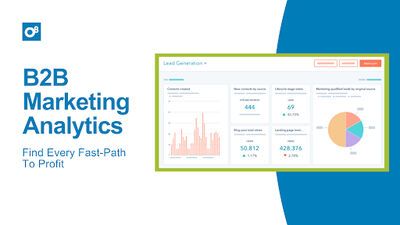
- Summary
- A Case Study-Based Walkthrough of Technical Content Marketing: Catapult
- 1. Immerse Yourself in the Topic
- 2. Learn From Internal Industry Experts
- 3. Verify You Are Selling to the Right People in the Right Way
- 4. Write the technical content
- Let O8's Technical Marketing Industry Veterans Write Your Technical Content
Many agencies and writers position themselves as able to write technical content. In past roles, they learned about DevOps, Amazon Web Services (AWS), natural language processing (NLP), and other technical industries. So they, with reason, believe they're suited to write about these concepts.
But, after a few pieces of writing, they find out it's not so simple:
- Writing about a technical product or service doesn't guarantee profit. A well-researched technical article will have zero ROI without clearly understanding why people buy. Many companies don’t interview customers to validate their desires, needs, and pains and instead produce uncompelling content based on assumptions.
- Most people don't resonate with complex information. It's easy to think that it is ok to add technical mumbo jumbo because you are not selling to everyone. But, in making your article too technical, you miss out on the larger pool of people who won't buy your product or service but know someone who could.
- Technical stakeholders tend to speak in terms of data. They will ask about the potential ROI of investing in content marketing, articles' conversion rate, and how content impacts the sales funnel. This could be easily solved by giving them those numbers. But, in our experience, most content agencies and writers don't report on monetary results as we do.
Like all of you reading, O8 has a technical content background. We started as a dev shop, our CEO is a Drupal expert, and we've written profitable technical content for companies in North America and Europe.
But, occasionally, clients challenge us to write technical content about subjects we are less familiar with. A real case study from one of our clients will teach you the exact steps to write profitable technical content writing for any type of content: social media, white papers, and web pages. You might not be in the DevOps space as our client, but we explained each step so you can replicate it for your company and industry.
Note: If, instead of learning how to write technical content, you are looking for someone to write it and report on its monetary results for you, you can book a free growth strategy call with O8.
A Case Study-Based Walkthrough of Technical Content Marketing: Catapult
Catapult is a UK growth stage startup that wanted to break into the American market. Like many growing companies, they went from zero to one through hard-to-scale tactics like referrals and word of mouth. These got them across the chasm. But they were insufficient to efficiently get them to the next level without hiring a full-time in-house team, so they hired O8's fractional marketing team.
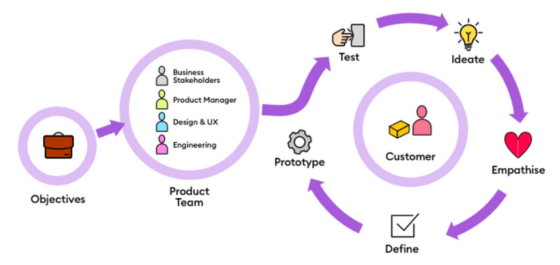
Catapult helps companies with Digital Service Delivery, going from Project to Product, and upgrading their legacy systems
Catapult contacted us to generate US leads now (ads) and leads later (SEO) after deciding to trust us. They liked that we could write about technical concepts like DevOps, generate 100+ new leads in a year through content, and that our main writer used to work for the Royal Bank of Scotland, which meant she could nail UK English.
The following is a replicable process we followed to create technical content for Catapult.
1. Immerse Yourself in the Topic
Technical writing requires specific expertise. A lack of experience in a particular technology can lead to content that does not convert target prospects. Even if you live and breathe a field, we still suggest consuming some books, articles, and podcasts on the subject you are writing about. You might not learn any new knowledge per se, but the research will refresh your knowledge:
- The specific terms, language, and goals of the audience
- The trends people are talking about the most, which can help you make your articles more timely and engaging
- How less experienced people talk about the subject, which can help you make your content more helpful to influencers (e.g., people who could share your content with those who can buy your product)
Don't overthink how you find these resources, there’s great information everywhere. We found The DevOps Handbook by simply searching for "DevOps" on Amazon. It has two authors: Gene Kim, the DevOps enterprise summit organizer, and Jez Humble, who works at Google Cloud. They have deep and wide DevOps experience, providing additional helpful subject matter expertise.
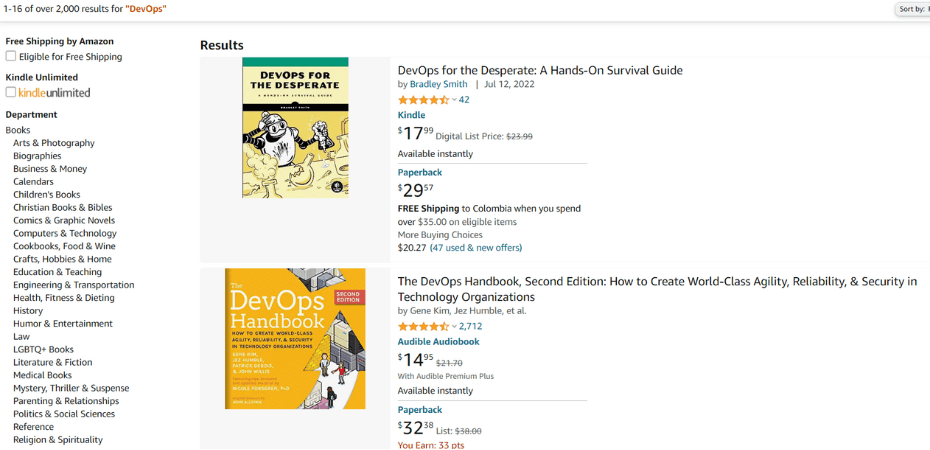
More than 2,000 potentially useful resources
Ideally, you would also listen to some podcasts, visit your library, and watch YouTube videos to truly engage with the subject matter. As Albert Einstein said, “You do not really understand something unless you can explain it to your grandmother.” Your time investment pays off by making your conversion-oriented content more relatable and easier for buyers and influencers to understand.
2. Learn From Internal Industry Experts
Team members building or operating the product or service have nuanced knowledge that outsiders or light users don't. You need to harness this institutional knowledge to create technical content that signals expertise.
Since we were doing marketing on behalf of Catapult, we gathered the following information from experts inside Catapult’s team:
- User manuals
- Typical use cases
- Technical documentation
- Why the DevOps approach mattered
- Why Catapult and not their competitors?
- The process buyers followed to find out about them
- Common problems and jobs (tasks) that Catapult solved
- What were the consequences of not using this approach?
We captured the language they used to add to blog posts and pillar pages as they answered these and other questions. We also tracked concepts that are helpful in improving DevOps knowledge for our technical audience.
3. Verify You Are Selling to the Right People in the Right Way
Across your company, your customer-facing team knows the most about what they are selling and why. But your clients ultimately know the most about what they want to buy. A mismatch between both views can make you write technical content that doesn't convert because it mentions the wrong pain point or solution or doesn't appeal to your target market.
At O8, we use (and used for Catapult) many tools to align our technical content with customers' needs. The following two are the most important ones:
User Profiles
Summarizing commonalities between customers in one document helps you to consciously weave what you offer as a solution to your audience's everyday problems that meet your buyers where they are.

Sample O8 Buyer Persona
Let's say Catapult wrote about how to make enterprises comply with a new regulation. It would be extremely helpful to tell readers they can achieve compliance through Catapult, providing helpful guidance without a hard sales pitch.
After talking to internal subject matter experts, you should have a significant portion of your profile's information. But this is part of the equation. Next, conduct online research into industry information and job data, and you can review individual LinkedIn profiles to get a holistic picture of your ideal client profile. Finally, host customer interviews to avoid mismatches between what end users and your team says, asking:
- Primary benefits they get from you
- How you could improve what you offer
- Alternatives they would use to what you offer
- The problem they were initially trying to solve
- Main consequences of stopping to work with you
Contrast information from both sides and stick to commonalities.
We rarely encounter this, but sometimes, what your target audience says differs significantly from what your team thinks. On these occasions, we like to use consumer analytics tools like SparkToro to corroborate assumptions.
Message Matrix
Some words, phrases, and anecdotes are more likely to persuade prospects to act than others. A messaging document gathers these messages in one place and describes the situations in which they are more persuasive.
A messaging document maintains a cohesive story about what your company does, to whom, and why it exists. You could hire the world's most talented technical content writer and see no ROI from their blog post if your homepage seems to sell something completely different from what the essay describes.
Your message matrix should include the central message (the why) you want to communicate, three key messages derived from your company's differentiators, and supporting arguments for each.
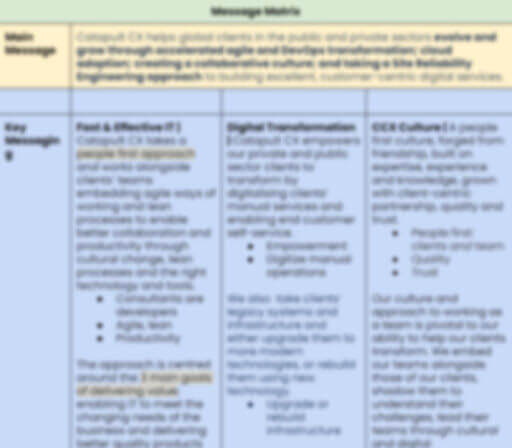
How we structured Catapult’s message matrix
Catapult's customers liked that the company could upgrade or rebuild its legacy systems and infrastructure. So we added a phrase Catapult could copy-paste to pitch this ability in our message matrix. In conjunction with the message above, we encouraged Catapult to use a supporting argument that reminded customers they could implement better ways of working now instead of in times of crisis.
Designating a specific group of messages as the likeliest to persuade prospects in a particular stage is so effective that we use matrices at O8.
For example, prospects who want us to market their technical products or services like hearing that we started as a website development agency. We are not learning to be technical—Many of us are technical-first. Our CEO is a Drupal developer very involved in the Drupal community, as is our team of developers. They engage in coding contrib module fixes on Drupal.org, and stay ahead of the latest changes in the platform.
As your comfort with a messaging document increases, add more narratives to it. People buy from brands they trust but also from those they like. Aligning your messages to a broader story or "why" can further enhance your ability to persuade them.
4. Write the technical content
Any writer can add jargon, but only an expert can explain concepts in terms your grandmother would understand. If she doesn't get it, the content still needs work.
Some writers argue against not using jargon, as using industry terms can signal that you know about it.
We oppose that. While it is true that jargon can signal expertise, you can explain a subject in simple terms without dumbing down the idea.
Nuances aside, geniuses like Stephen Hawking are as famous as they are among a non-scientific population because most people can at least feel like they understand what Hawking was saying. Most of us don't grasp the infinite nuances of how a black hole works. But a talented writer will combine their deep knowledge of the subject with lifelong learning and a desire to communicate clearly and effectively.
Even technical experts need assistance from technical writers to convey their value propositions and convince prospects to become customers. Thanks to talking to stakeholders and working with expert writers, we attracted 15 inbound leads in the first month of this client at an average deal size of $100,000.
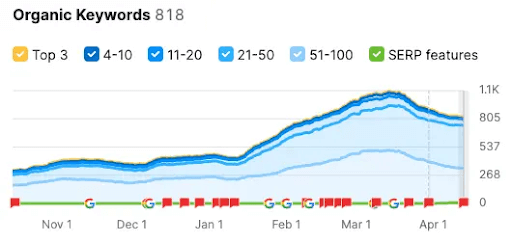
Let O8's Technical Marketing Industry Veterans Write Your Technical Content
If you resonate with our process, technical background, and client results and want to work with us, you can book a call and learn more about O8 here. Our writing process turns technical information into straightforward, high-quality, and in-depth content that persuades readers to buy and follows the latest search engine, copywriting, and readability best practices.




